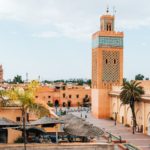Latin Quarter
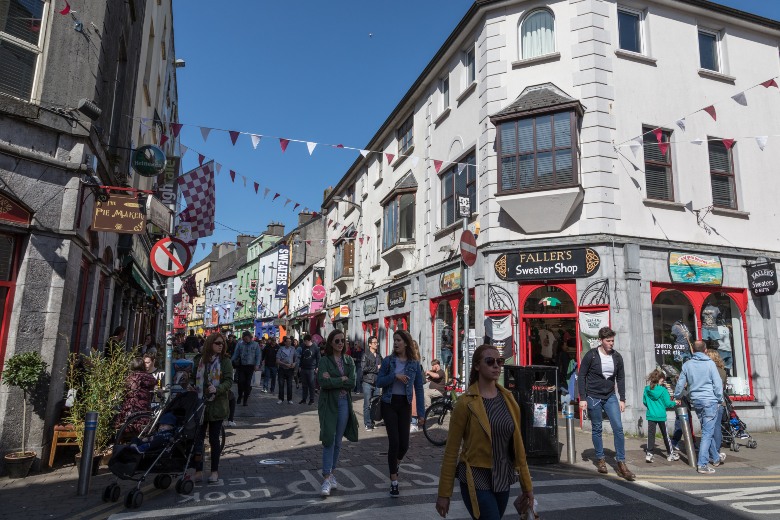
From O’Brien’s Bridge to the Spanish Arch, the Latin Quarter is a hook-shaped district of cobblestone streets in Galway’s old centre. A number of Galway’s most famous pubs, bars, restaurants, galleries, and shops are found here.
During your visit to the Latin Quarter, you’ll find a wealth of traditional Irish crafts, such as the Galway Woollen Market, full of pure wool and classic knitwear. While watching the sights, window shopping, or bar-hopping on the streets, street performers provide you with a constant soundtrack of folk music.
Eyre Square
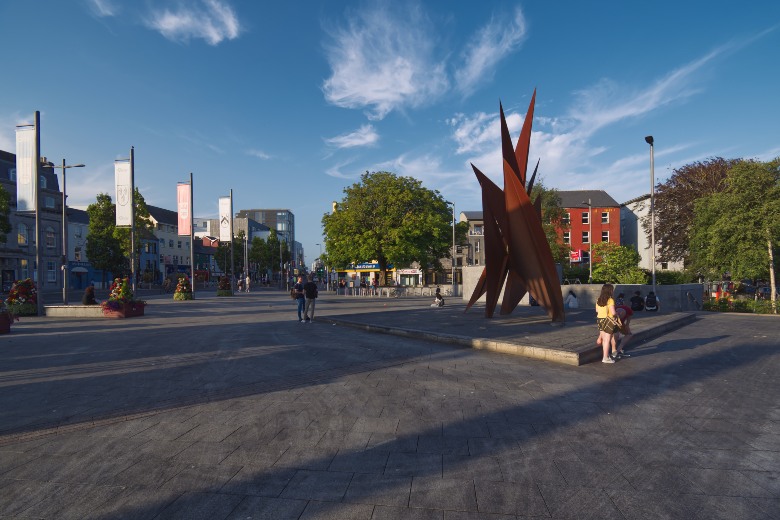
A town green was originally used as a market square in front of Galway’s old gates, just north of the Latin Quarter. As part of a major redevelopment project in 2000s, Eyre Square was redesigned entirely, becoming a modern plaza.
Quincentennial Fountain, which depicts one of Galway’s typical “Hooker” sailboats abstractly, is one of the newer works of art.
One of Ireland’s foremost Irish-language writers, Pádraic Ó Conaire, is sculpted in bronze in the building, as is John F. Kennedy. There are also flags bearing the families’ colours for the 14 Tribes of Galway. There are more than 70 high street chains and eateries in the Eyre Square Center, which sits on the south border of the square.
Quay Street
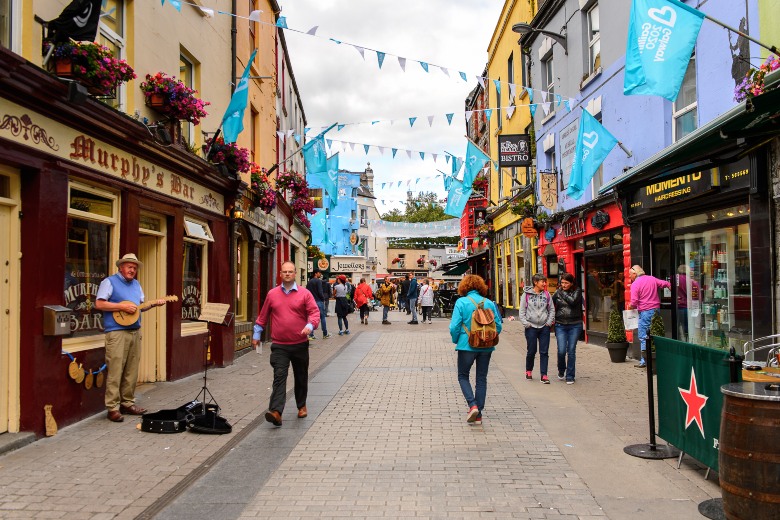
There are colorful storefronts, trendy shops, and restaurant terraces under awnings on Quay Street in the Latin Quarter, which slopes down to the river. A variety of buskers play jaunty tunes along the way, rain or shine.
While these pubs are right on the tourist trail, they have live music, dancing, and reasonable prices. The Wooden Heart next door makes wooden toys and Twice as Nice purveys vintage clothes and wool between eateries and bars.
Salthill Promenade
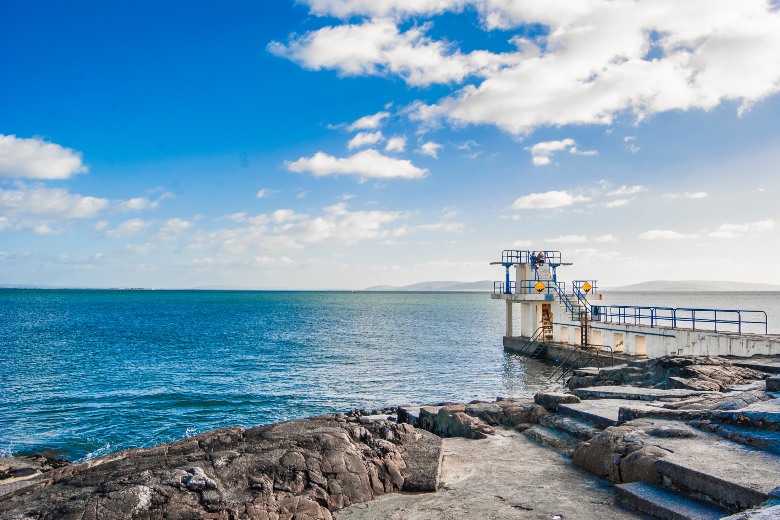
Salthill Promenade is two kilometers long and offers a beautiful view of the bay from the north side of the city. On a clear day, you can see The Burren across the promenade and Connemara up in the northwest.
After the Great Famine, the land behind the promenade was repurposed for farming and then turned into an early tourism destination with the arrival of the Eglinton Hotel in 1860. Restaurants, cafes, and bars line the promenade. The National Aquarium of Ireland runs the Galway Atlantaquaria, or watch the sailing yachts in summer.
Galway Cathedral
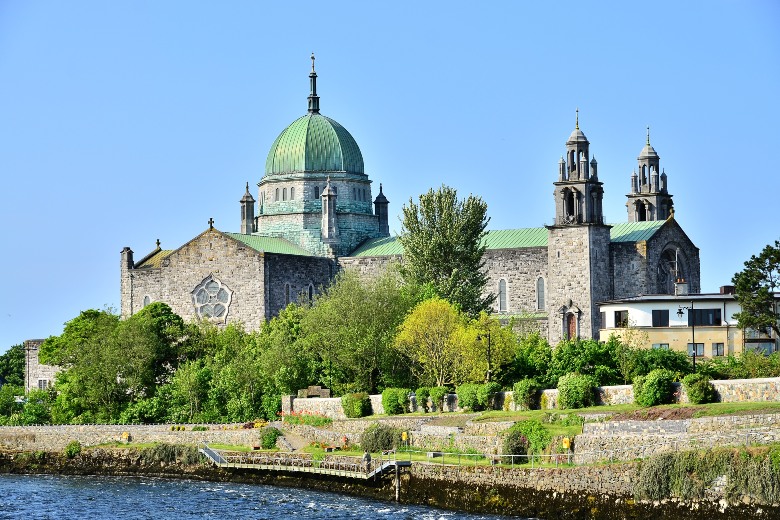
Galway Cathedral’s dignified limestone structure might be mistaken for being centuries old. Originally built atop Galway’s old town prison in 1958, it was completed in 1965.
There are Romanesque influences in its simple walls and narrow semicircular window arches, Gothic influences in its traceried rose above the main entrance, and Renaissance influences in the magnificent dome of the building.
St Joseph the Worker and the Crucifixion are depicted in a mosaic not only by Patrick Pollen but also by German-Irish sculptor Imogen Stuart.
St Nicholas’ Collegiate Church
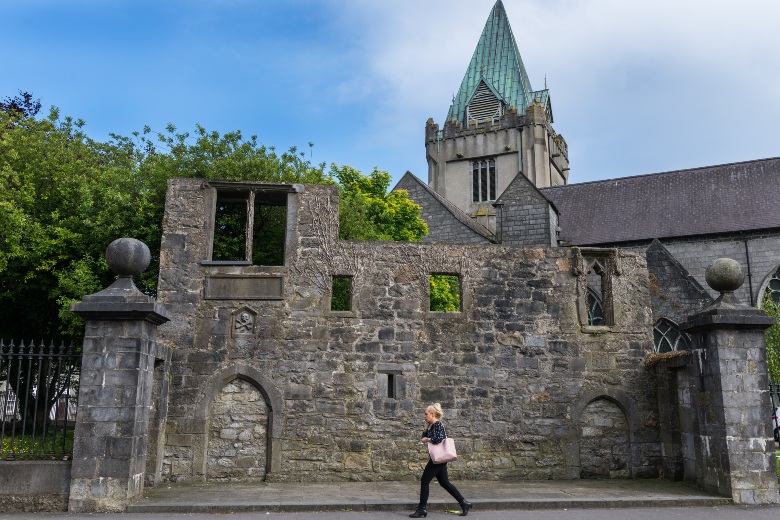
This medieval parish church was built in 1320 and is the largest in Ireland; regular services are held here every Sunday.
In Galway, gray limestone is used for the construction of the monument, which is dedicated to Saint Nicholas of Myra, the patron saint of seafarers. This very spot is the site of the largest body of Irish genealogical lore, Leabhar na nGenealach, which records the heritage of Irish families.
During the expansion of the church in the 14th and 15th centuries, the majority of the architecture dates from those centuries. This building is a great example of iconoclasm, carried out by the Puritans of Oliver Cromwell’s troops during the 17th century.
In the church, the oldest ledger stone dates back to Adam Bures, which is from approximately this time period.
Galway City Museum
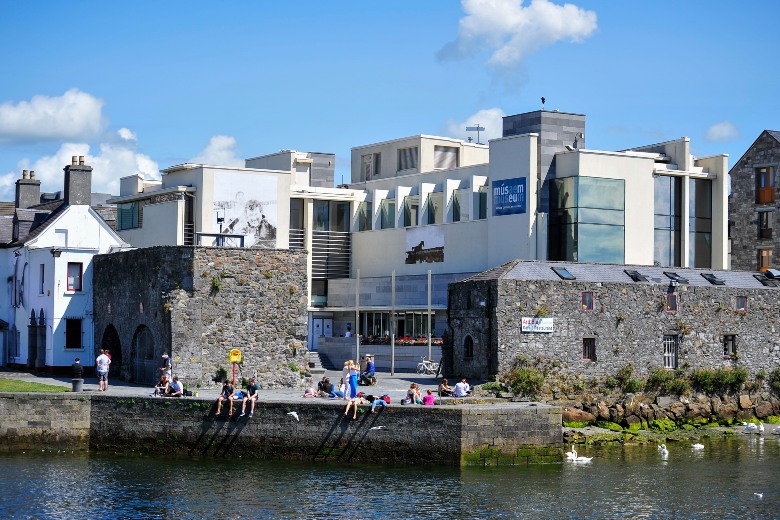
This free and multi-faceted museum, located by the Corrib River, offers a wide range of art, history, and artifacts related to Galway. The exhibit includes a traditional Galway sailboat, known as a “hooker”, and a magnificent piece of ornamental silverware from Dublin.
This collection is composed of corbels, plaques, coats of arms, chimney fragments, two complete fireplaces, and fragments from the 16th and 17th centuries.
In addition, there is a photography gallery to document the City from the 1950s onwards, as well as artifacts from the 19th and 20th centuries from Galway’s pubs, such as pipes, bottles, and tin signs.
Kirwan’s Lane
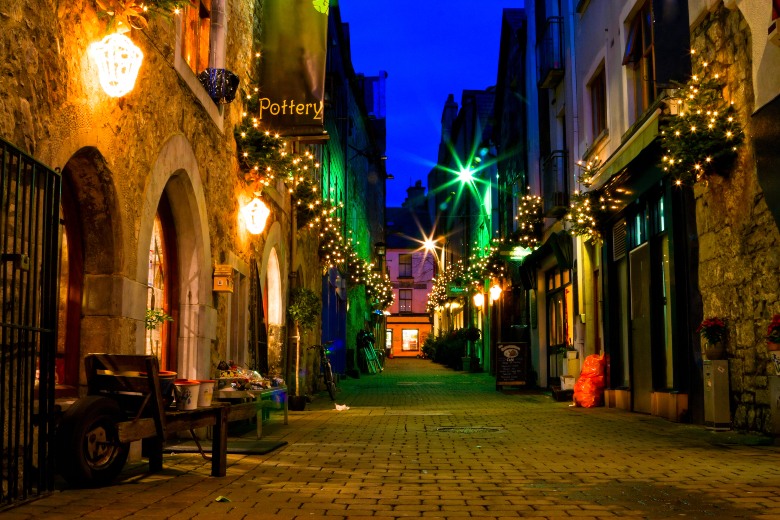
Located inside Galway’s former city walls, Kirwan’s Lane is named after a Tribe of Galway. Through a ravine of stone houses dating back to the 16th and 17th centuries, this narrow pedestrian street curves.
When the weather is nice, outdoor tables line the path in these buildings, which house pubs, restaurants, cafes, and arts and crafts shops. John Kirwan donated the Dominican slate nunnery in 1686 to Busker Browne’s Pub here.
Spanish Arch
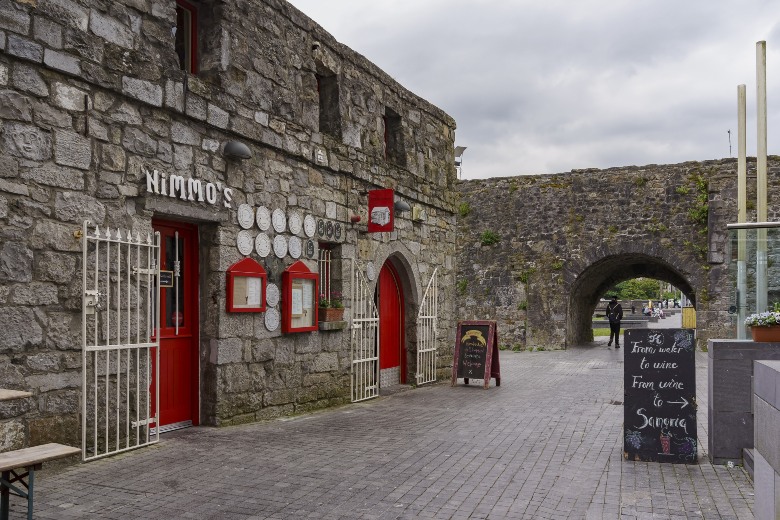
There are only two surviving arches of the front wall, or Ceann an Bhalla, right in front of the Galway City Museum. In order to defend Galway’s quays, this structure was known as the Spanish Arch, which ran from Martin’s Tower to the Corrib River.
Despite not being a stirring monument, the arches date all the way back to 1584 and suffered damage from the Lisbon quake of 1755.
Corrib Princess River Cruise
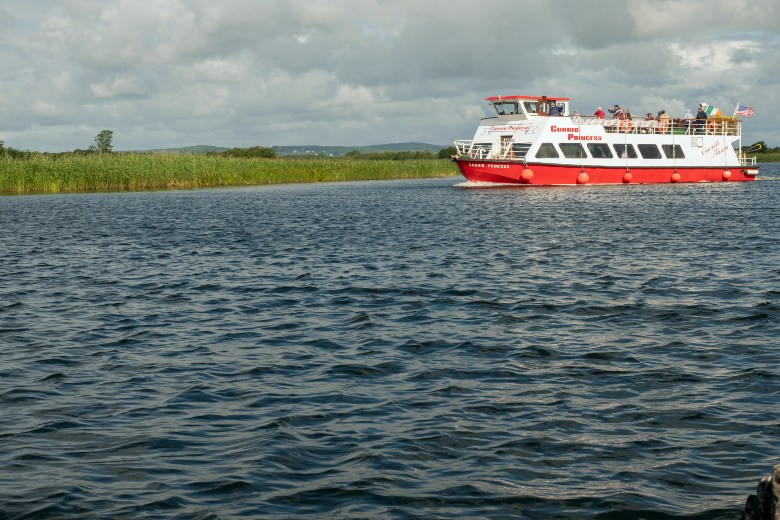
This boat runs from May to September on the River Corrib to the lake (lough). During the 90-minute trip from Woodquay on the central city’s edge to the lake, you’ll see farmland on the south and east shores, and heath and bogs on the north and west coasts.
In addition to its numerous islands, the lake is also known for its many beauty spots, which include more than 1,300 in all.
Ivy has taken over Menlo Castle’s ruins, which burned down in 1910 and lie in the ruins of a 16th-century mansion. In July and August, there is an extra trip at 16:30 thanks to the Corrib Princess, which leaves at 12:30 and 14:30.
Fishery Watchtower Museum
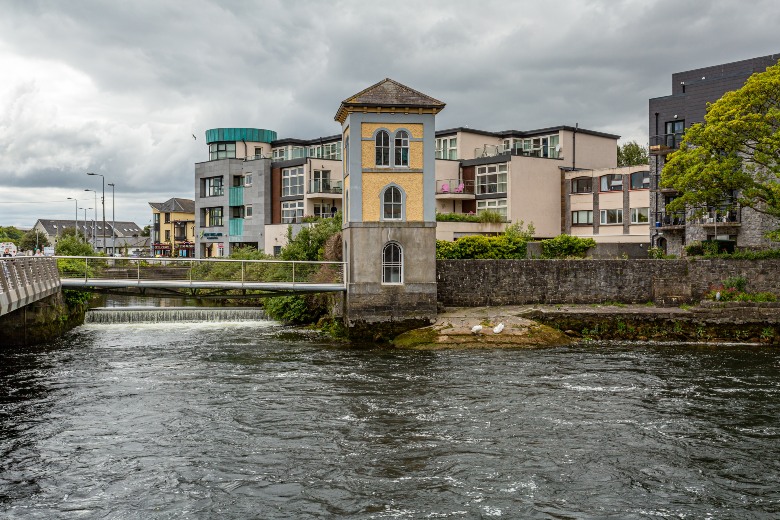
The Fishery Watchtower is a Victorian “draft netting station”. It is the only one of its kind in Ireland. To keep an eye on fish stocks and to spot illegal fishing on the river, the neo-Romanesque structure was built in 1853.
The term “draft netting” refers to the way a single net is suspended between a rowboat and a shore in order to catch salmon.
Following a renovation in 2015, the tower opened in 2015 and contains a free museum featuring fishing equipment, black and white photographs, and fish tanks with young salmon and elvers (eels).
Lynch’s Castle
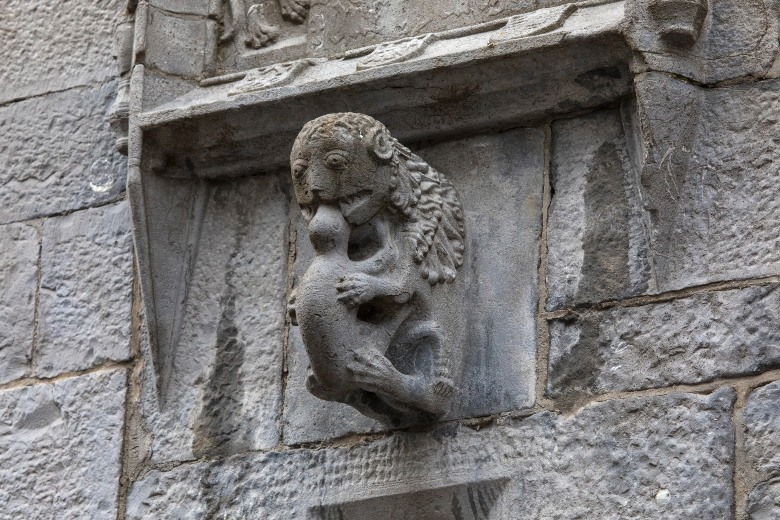
An impressive limestone house stands out from the surrounding buildings at the corner of Shop Street and Abbeygate Street. There is a fortified house in Lynch’s Castle, which could date back as far as the 14th century.
It offered its owners extra protection from raids, the Lynch family who held sway in Galway during that time and had Anglo-Norman roots. A Spanish sailor was killed here by James Lynch Fitzstephen, who was mayor of Galway in 1493.
Lynch’s coat of arms appears on the main facade, and Henry VII’s coat of arms appears on another framed panel.
Wild Atlantic Way
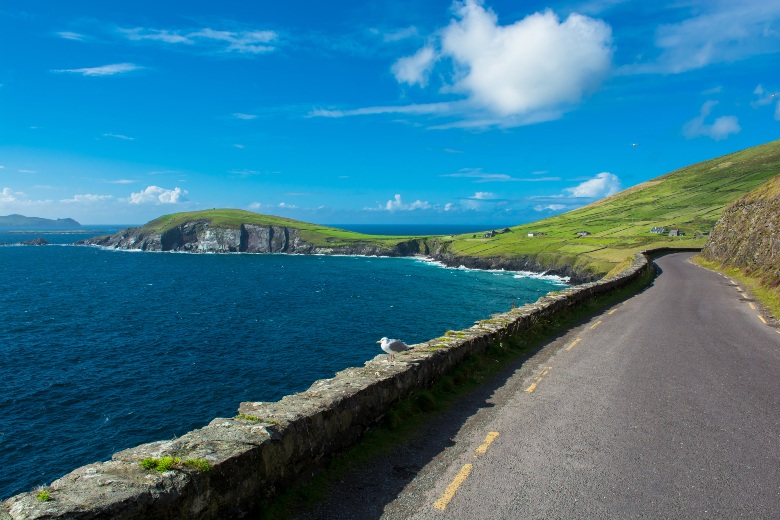
From Malin Head in town to Kinsale Harbour, Galway lies on an Ireland-wide tourist trail that stretches for 2,500 kilometers along the west coast. North and south road trips are fantastic from Galway, which is roughly midway between the two countries.
In County Clare, you can find the photogenic limestone pavement in The Burren, an otherworldly glaciated kast landscape.
There are over 50 peaks in four mountain ranges in the Connemara National Park, which is located up the coast. A 5,000-year-old tomb and far-off mountain and ocean views can be seen from the summit of Diamond Hill, near the village of Letterfrack.
Aran Islands
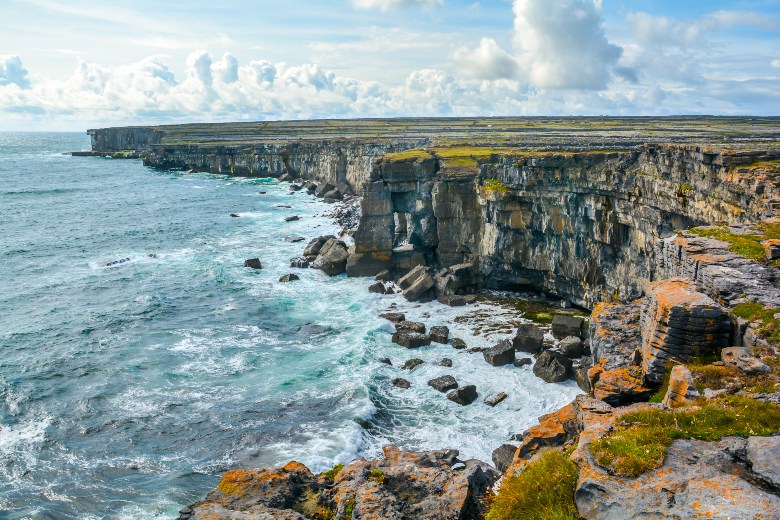
A ferry can take you to a small archipelago of rocky islands where Galway Bay joins the Atlantic.
During summer, you can hop between islands via an inter-island service. Since the Aran Islands were isolated from modern Europe for centuries, farming communities have developed after centuries of plowing and enriching the soil with seaweed.
There is still a lot of Irish Gaelic spoken here, for instance. Several prehistoric forts still stand on the islands, including the impressive Dun Aonghasa atop Inishmore’s 100-meter-high cliffs.
Walking trails lead you to cliffs and beaches battered by the Atlantic, Medieval churches hollowed out by the Atlantic, and more Neolithic forts dotted about the islands. The pastures are crisscrossed by centuries-old limestone dry-stone walls and there are numerous Neolithic forts still standing.
Dunguaire Castle
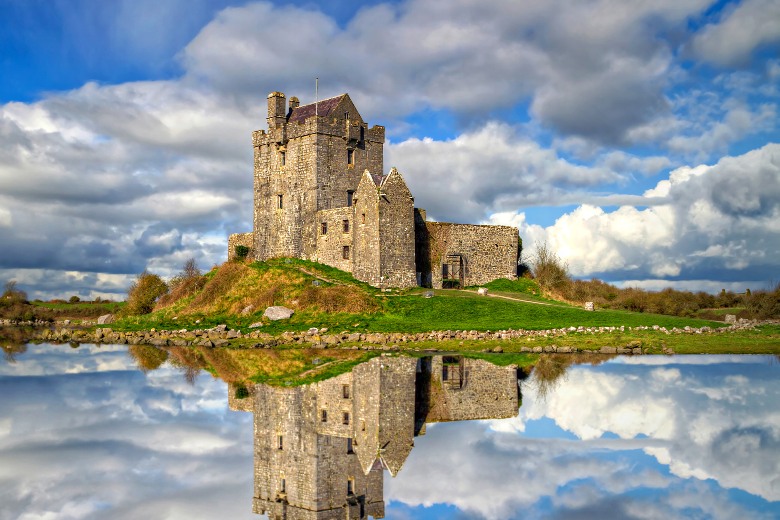
A 16th-century tower house, the castle is rumored to have been one of the most photographed in Ireland.
It is situated on a small outcropping on the south side of the bay about 30 minutes from Galway. Hynes Clan, which had been in the region for a millennium, built the 23-meter tower and encircling wall in 1520.
As a result of Oliver St John Gogarty’s restorations in the 1920s, the castle has hosted a number of literary giants, including William Butler Yeats, Lady Gregory, and George Bernard Shaw. Duunguaire Castle hosts a summer banquet where medieval-style food is served and live entertainment is provided, especially poems by Yeats, Gogarty, and Shaw.


